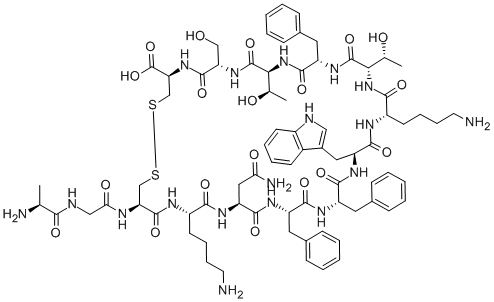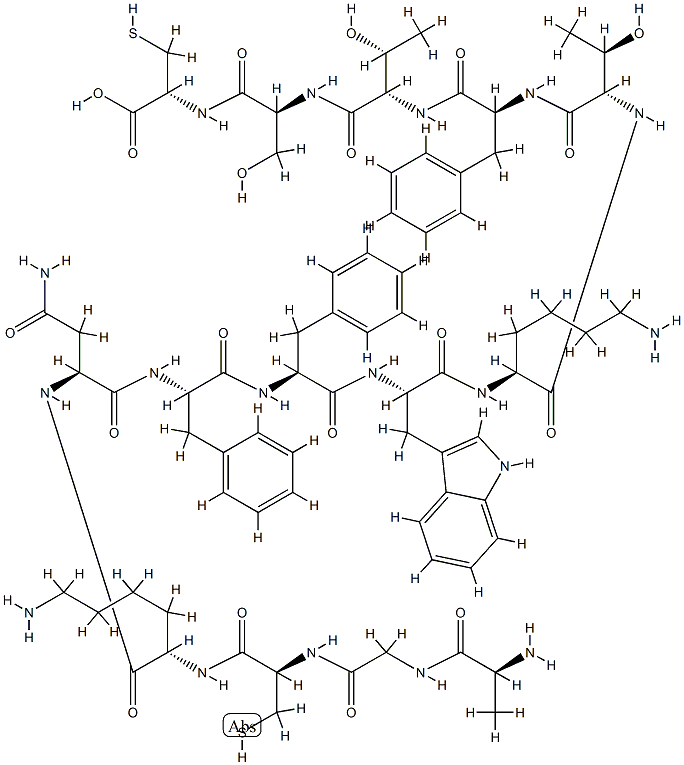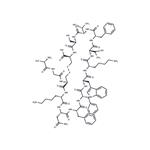Chemical Properties
White Powder
Uses
Growth hormone-release inhibiting factor; treatment of severe, acute hemorrhage of gastroduodenal ulcers; experimental antidiabetic.
Definition
ChEBI: A fourteen-membered heterodetic cyclic peptide comprising the sequence Ala-Gly-Cys-Lys-Asn-Phe-Phe-Trp-Lys-Thr-Phe-Thr-Ser-Cys cyclised by a disulfide bridge between the two Cys residues at positions 3 and 14.
Biological Functions
Somatostatin is a cyclic 14-peptide that was first isolated by Guillemin in 1973 and is probably
the most thoroughly investigated and most important of the inhibitory factors produced by the
hypothalamus. The principal activity of somatostatin, which is of hypothalamic origin,
is inhibition of the release of growth hormone (GH) from the anterior pituitary. Too much GH, as
in pituitary tumors, causes acromegaly, a form of giantism. On the other hand, too little GH
leads to dwarfism. Somatostatin also has been found in the pancreas and the GI tract, where it
inhibits the secretion of both insulin and glucagon from the pancreas as well as the secretion of
a variety of intestinal peptides (e.g., gastrin, secretin, pepsin, and renin). The short half-life of
somatostatin, which is less than 3 minutes, has precluded its use as a therapeutic agent. Many
derivatives of somatostatin have been prepared to increase its duration of action and/or to
enhance its selectivity of action. The culmination of these structure–activity studies was the
development of octreotide acetate.
General Description
Somatostatin (SST) is a peptide.
Biochem/physiol Actions
Somatostatin regulates the secretion of hormones and bioactive peptides. It acts as an inhibitor in the digestive tract by inhibiting gastrin release. In the pancreatic islets, it inhibits glucagon and insulin release. Somatostatin and its synthetic analogs have been used in the treatment of neuroendocrine tumors.
Purification Methods
Somatostatin is a tetradecapeptide which is purified by gel filtration on Sephadex G-25, eluting with 2N AcOH, and then by liquid partition chromatography on Sephadex G-25 using n-BuOH/AcOH/H2O (4:1:5) and has RF = 0.4. It is a brain growth hormone releasing-inhibiting factor which has also been synthesised. [Burgus et al. Proc Natl Acad Sci USA 70 684 1973, Sorantakis & McKinley Biochem Biophys Res Commun 54 234 1973, Hartridt et al. Pharmazie 37 403 1982.]




